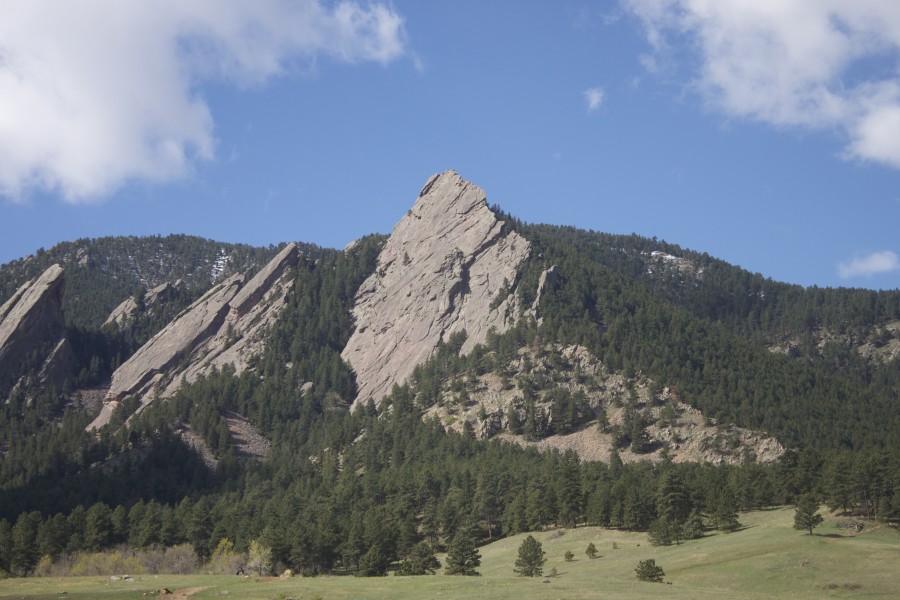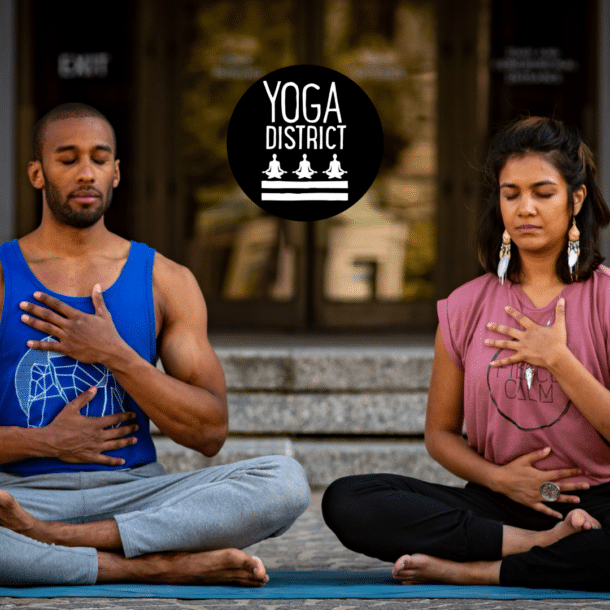Like a mountain, it’s important to have a firm base, and prominent peak. Let’s start of with the base and explore weight placement in our feet. Take notice of the three weight-bearing parts of your feet; your heel, the ball of the foot at your big toe, and the ball of the foot at your pinky toe. Once you’ve acknowledged these parts, lift your toes for an upward stretch and plant them, then raise you heels. With each raise, front and back, you should feel the front and back of your calves activate.
Then, make your feet firm, flat and forward. Your feet may be touching, but you can also keep them separated if you choose, hip distance apart. Check to see if your hips are aligned with your legs, which should be aligned with your feet, and then let your tailbone drop. This will extend your lower back, which will in turn, lift your chest. Remember that the formation of mountains are caused by lateral movement, so bring your shoulders back and center them between the front and back of your body. This should free your upper back a bit, allowing the head and neck to feel buoyant.
Mountains are recognized for more than just their height. You’re not just going to resemble a mountain by being vertical. Feel the slow expansion and movement inside of you and take note of the symmetry in your body, yet acknowledge each individual physical plane; your left, your right, your front and back…In doing so,you can move slowly by rocking back and forth. Think of how even though mountains are solid structures, they too move, over time, in very subtle ways.
Now find your stillness. You could to concentrate on your dhristi and gaze forward. In On the Road one of Jack Kerouac’s characters named Japhy often meditated on mountains and thought that, to him, ” a mountain is a buddha. think of the patience, hundreds of thousands of years just sittin there bein perfectly perfectly silent and like praying for all living creatures in that silence and just waitin for us to stop all our frettin and foolin.”
My job keeps me on my feet for long periods of time. Sometimes there’s downtime during my shifts, but because I must be ready to step into action, I’m not always allowed to sit down for it. Practicing mountain pose throughout these lulls not only helps the time pass, but makes me more aware of my own posture and stance. So take advantage of situations like that too. Idle time can always be transformed into positive periods of meditation. You can make a resting pose out of periodic standing.
Speaking of peaks, here’s a moving and humbling video of time-lapse shots capturing the ethereal, yet rugged surroundings of the Matterhorn peak in Switzerland. Feel free to watch, standing up, in Tadasana.


